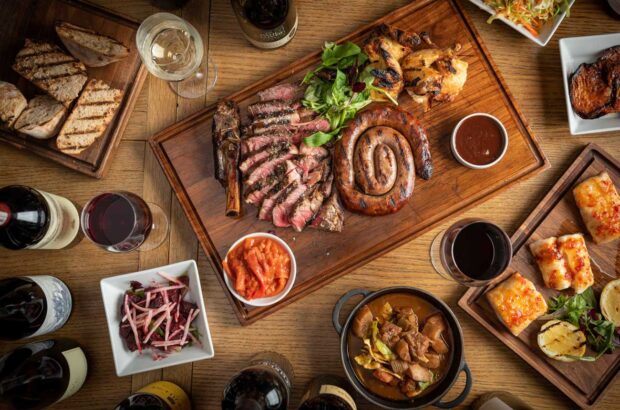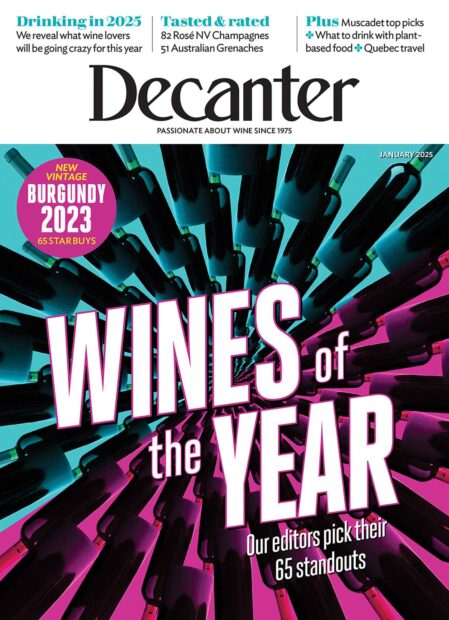Andrew Jefford finds a new generation of German winemakers emerging from a country with a strong vineyard tradition but a corroded wine image towards the end of the last century.
Wine is an enduring activity. The Chave family first made wine in the Rhône in 1481, while the Ricasoli family acquired its Brolio estate, today the biggest in Chianti Classico, in 1141. Schloss Vollrads sold wine to the St Viktor Monastery in Mainz in 1211; Schloss Johannisberg’s vineyards were documented in 817.
What, then, of transitions in a perennial agricultural activity of this sort? There are two options. If business is going well, transitions should be seamless, traditions respectfully refined. If business is going badly, by contrast, all change.
German wine’s corroded image, as the twentieth century drew to a close, demanded the latter approach. The hapless industrialisation of German wine proved a dead end. A vast sugar-drainage operation has been the main practical effect of the change, with just under 67 per cent of all German wine from the 2014 vintage being classified as trocken (dry) or halbtrocken (half-dry).
Initiatives stressing change, meanwhile, have proliferated. Generation Riesling is an organization for German wine producers who are under 35 (there are now, 10 years from its inception, over 500 members), and the Riesling Fellowship is Germany’s way of celebrating apostles of ‘the new Germany’ among producers and opinion-formers. Both were feted at a January 28th tasting and dinner at London’s Vintners’ Hall.
Symbols of change glared that evening. There were no green wool suits or felt hats; indeed one of the Generation Riesling producers, Andi Weigand of Iphofen in Franconia, rocked up in a collarless shirt and reversed baseball cap — cruel to those of us who had struggled, as instructed on the invitation, into our unfamiliar suits. Couldn’t the Fellowship have stipulated collarless shirts and reversed baseball caps for all?

The new German Riesling dress code. Andi Weigand, of Iphofen in Franconia (right).
Wine ranges of 30 different bottlings seem to be history: most have been pared back to half-a-dozen or so wines. Dry, of course, was the order of the night – and it wasn’t just Riesling on offer. Spätburgunder (Pinot Noir) was in, as is Weissburgunder (Pinot Blanc), with a seasoning of Grauburgunder (Pinot Gris), Silvaner, Lemburger and even Gutedel (Chasselas). The change in wine labeling is stark, too. Adieu those decorous, hand-coloured nineteenth-century label illustrations; auf wiedersehen to ornate heraldic lions, eagles and shields. In their place, lots of big, blocky typography and plain colours. (A bit dull, frankly.)
The hypersyllabic vineyard verbiage we all grew up with is fighting for survival against what we could broadly call concept cuvees, which can be as difficult to work out (one of Tobias Rickes’ Nahe wines, a Bacchus-Kerner blend, was called ‘Kick off’); geological terms are used, too, with almost French abandon.
Even the anointed Fellows cultivate youthful insolence. Last year, Stuart Pigott stupefied the throng by castigating British World War Two bombing policies, and the Churchillian ‘myth’, in his acceptance speech; this year the New York Riesling evangelist Paul Grieco managed not one but two gratuitous uses of the ‘f-word’ in his own acceptance speech. You could hear dozens of ghostly Masters of the Worshipful Company of Vintners gasping in their graves.
There was a tasting, too, of the wines of 10 Generation Riesling producers from five different German regions (Baden, Franken, Nahe, Pfalz and Württemberg), with a sprinkling of further Generation Riesling wines with dinner. These were of mixed quality, which is unsurprising; few of us have hit the summits of professional achievement by 35. (Tasting notes for some of the best are given below.) By the end, though, a heretical question of my own was beginning to nag.
They come, it’s true, as a relief at first, those very pure, pristine dry whites: they’re the colour of thin air, they’re all politely pitched at around 12.5%, and they tend to smell and taste of cleanliness itself, which is somewhere between a neutral sappiness of deciduous woodland in very early spring and the smell of fresh laundry. After a while, though, I found myself struggling to distinguish them in tasting notes. Then, a little later, I realized I couldn’t really tell which German wine region I was in any more. If everything is sappy and spotless and dry and around 12.5%, from north to south, haven’t we lost as much as we’ve gained? Might ‘the Big Dry’ not make German wine more samey?
I puzzled this over on the way home. Maybe the producers are still finding their way forward with dry wines, and most sensibly begin from a point of caution: clean and fresh is best. After trust has been established, the push towards greater stylistic expression can begin.
Or maybe we drinkers simply have to re-learn our German wines, and stop looking for differently shaped and contoured arabesques of fruit in them, and start to hunt for secondary complexities and nuances, hidden inside a tautness of contour and a new sheerness of flavour.
Riesling, happily, seems to suffer less from pristine homogeneity than Weissburgunder, Grauburgunder, Silvaner and Gutedel; with Riesling you can still more or less pitch for a particular region.
And there was no questioning the sincerity of these young producers in their search for terroir expression. “I am Generation Riesling,” said Alexander Pflüger (Pfalz), “but my father was Generation Everything. They tried to do everything well. We’ve simplified varieties; we skip the system of Prädikats and go straight to origin. The quality has to be there, but it is the individualism and authenticity of the wines which we are looking for.” “Nobody can take our soil or our climate to New Zealand and all the other places,” pointed out Jan Eymael of Pfeffingen (Pfalz). “What we do best is based on our soil and microclimate – and Riesling.” Let’s give the new guard a little time.
My Generation Riesling Picks

Christiane Koebernik pouring her wines at the German Riesling event in London.
Emmerich Koebernik, Weissburgunder Trocken 2014
An exceptionally good Weissburgunder from the talented Christiane Koebernik, based at Waldböckelheim in the Nahe: not simply sappy, clean and pristine, but with a succulence to it as well, and subtle apricot and apple fruit. 89 points
Emmerich Koebernik, Riesling Vom Tonschiefer Trocken 2014
The slate-grown Nahe Riesling is pure, refined and lean, with smoky scents and alluringly citrussy, leafy flavours devoid of rawness or bitterness. 90
Emmerich Koebernik, Riesling Vom Porphyr Feinherb 2014
From a steeply sloping vineyard of soils derived from volcanic materials, this was a pristine, crisp-focus off-dry Nahe Riesling (Feinherb is defined at Koebernik as up to 20 g/l residual sugar) with rose and wild strawberry scents and flavours. The finish swings round towards pithy pink grapefruit, and has the kind of length which suggests generous extract. 93
Emmerich Koebernik, Spätburgunder Vom Löss Lehm 2013
The pick of the reds served with dinner thanks, I’m almost tempted to say, to its lack of (or sane) ambition: lightly coloured, soft, supple, round and drinkable rather than dark, taut and forbiddingly oaky. 89
Pflüger, Weissburgunder Quarzit 2015
Another rewarding Pinot Blanc (from Pfalz, this time): peachy, spicy and rich, though it finishes dry, while the extreme youth of the bottling gives its acidity a mouthwatering, fruited density. 89
Pflüger, Buntsandstein, Riesling 2015
I loved this: it was vinous and sappy, almost like a Sancerre or a Chassagne might be, yet at the same time it had that classic Riesling amplitude of fruit, which under these skies and in these sandstone soils resulted in explosive orange characters. Again, its infancy is a plus: race it to table. 90
Pflüger, Herrenberg Grosse Lage Riesling 2015
Very clean, dry and drinkable (limestone soils almost evoke Alsace here), packed with slowly unfolding spice, and with orchard fruits dressed with just a squeeze of pineapple from that Pfalz sunshine. 90
Pfeffingen, Ungstein, Riesling 2014
Soft, chewy and delicious, packed with plush orange, a Pflaz wine that shows that ‘dry’ need not mean either neutral or austere. 89
Winegut Winter, Geysersberg Grosses Gewächs Riesling 2012
From a cool clay site in Rheinhessen, this was a dignified, dense, closely layered and resonantly dry Riesling which evoked stone and other non-fruit notes better than any of the other wines at the dinner. 91
Read more Jefford columns:

Jefford on Monday: For the love of limestone
'Limestone is the best party in the wine world,' says Chilean soil expert Pedro Parra, who joins Andrew Jefford on

Jefford on Monday: Cahors’ Argentine Revival
Some of the greatest Cahors wine terroirs are not even planted, writes Andrew Jefford, who argues the region's reputation will

Jefford on Monday: Toxic advice
Andrew Jefford examines the proposed UK drinking limits and comments made by Britain’s chief medical officer, Dame Sally Davies...

Jefford on Monday: The organic audit
Andrew Jefford provides an organic wine health check ahead of France's biggest organic wine show, in Montpellier, Languedoc-Roussillon...







